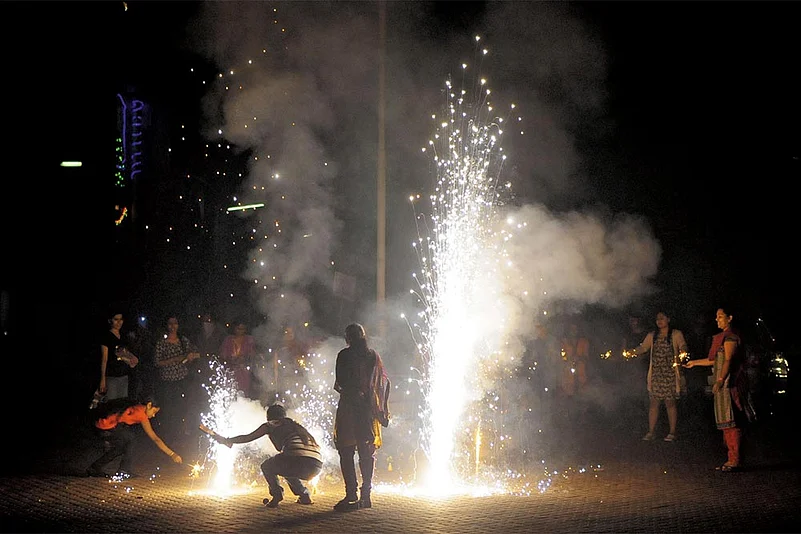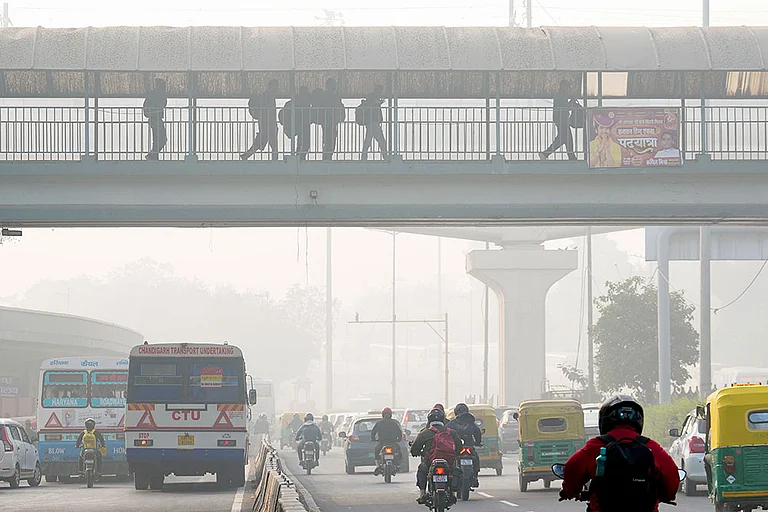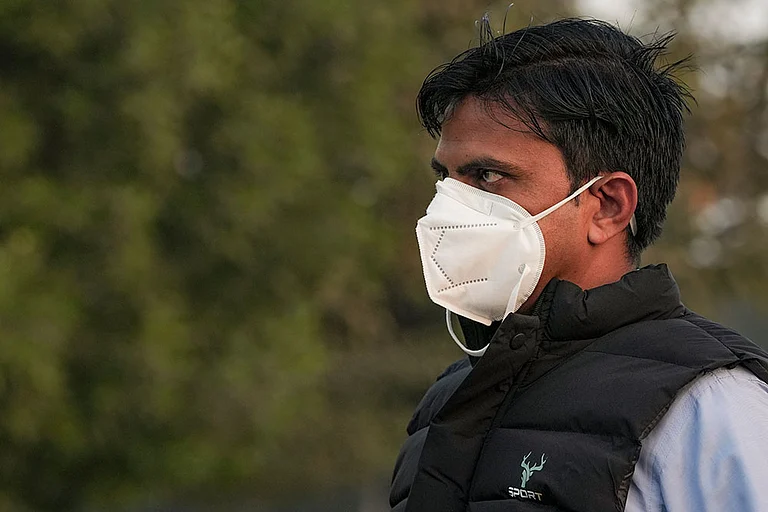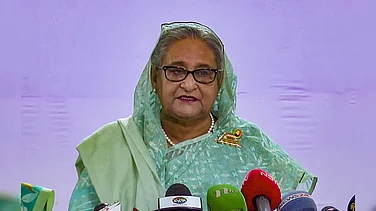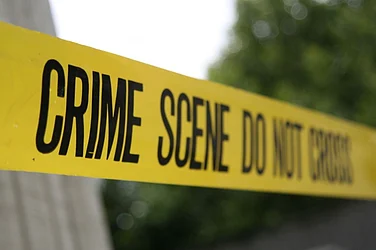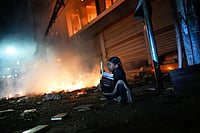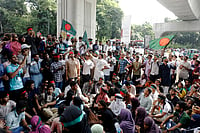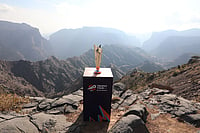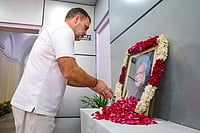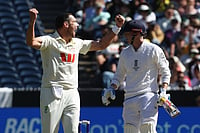
Delhi’s overall AQI hit 344 on Diwali night, marking ‘very poor’ air quality.
Four areas — Dwarka, Ashok Vihar, Wazirpur and Anand Vihar — recorded ‘severe’ pollution levels.
CAQM invoked Stage II of GRAP as forecasts warned of worsening air quality.
With Diwali celebrations continuing late into Monday night, Delhi’s air quality deteriorated sharply as most monitoring stations in the national capital recorded pollution levels in the ‘red zone’, indicating ‘very poor’ to ‘severe’ air quality, PTI reported.
The Supreme Court had permitted the bursting of green firecrackers between 8 pm and 10 pm on Diwali, but festivities extended well beyond the designated window. As a result, 36 out of 38 monitoring stations registered pollution levels in the ‘red zone’, according to data from the Central Pollution Control Board (CPCB).
At 10 pm, the city’s overall Air Quality Index (AQI) stood at 344 — categorised as ‘very poor’ — with four locations recording ‘severe’ levels above 400. The SAMEER app developed by the CPCB identified these stations as Dwarka (417), Ashok Vihar (404), Wazirpur (423), and Anand Vihar (404).
Delhi’s 24-hour average AQI, reported daily at 4 pm, remained in the ‘very poor’ category at 345, higher than Sunday’s 326, official data showed. Earlier in the afternoon, 31 of the 38 stations reported ‘very poor’ air quality, while three registered ‘severe’ levels.
Forecasts from the India Meteorological Department (IMD) and the Indian Institute of Tropical Meteorology (IITM) indicated that the air quality could slip further into the ‘severe’ category on Tuesday and Wednesday.
The CPCB classifies AQI between 0 and 50 as ‘good’, 51–100 ‘satisfactory’, 101–200 ‘moderate’, 201–300 ‘poor’, 301–400 ‘very poor’, and 401–500 ‘severe’.
Data from the Decision Support System (DSS) showed that transport emissions contributed 15.6 per cent to Delhi’s air pollution on Monday, while other factors, including industrial activities, accounted for 23.3 per cent.
On Sunday, the Commission for Air Quality Management (CAQM) enforced Stage II of the Graded Response Action Plan (GRAP) across Delhi-NCR, following a review by its sub-committee and based on IMD and IITM forecasts.
Earlier, on 15 October, the Supreme Court had allowed the sale and bursting of green firecrackers in Delhi-NCR between 6 am and 7 pm and again from 8 pm to 10 pm on Diwali eve and the day of the festival, according to PTI.






